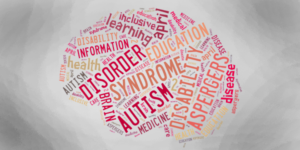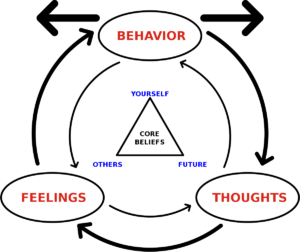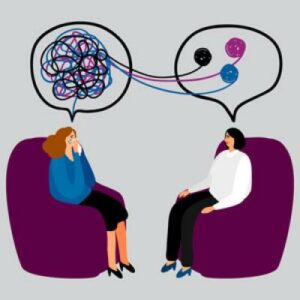Psychodynamic therapy is a type of psychotherapy that focuses on understanding the relationship between an individual’s thoughts, emotions, and behaviors. Psychodynamic therapies treat many mental disorders including anxiety disorders, eating disorders, depression, ADHD/ADD, psychosis/schizophrenia. Moreover, psychologists use this technique to uncover unconscious conflicts or ideas that may be causing emotional distress for individuals.
Contents
- 1 Definition Of Psychodynamic Therapy
- 1.1 Types Of Psychodynamic Therapy
- 1.2 Goals Of Psychodynamic Therapy
- 1.3 Core Principles Of Psychodynamic Therapy
- 1.4 Origins Of Psychodynamic Therapy
- 1.5 How It Works?
- 1.6 Is It Effective?
- 1.7 Psychodynamic Therapy vs. Cognitive Behavior Therapy
- 1.8 Psychodynamic Therapy vs. Medication
- 1.9 Role of Psychodynamic Therapists
- 2 Conclusion
Definition Of Psychodynamic Therapy

Psychodynamic therapy is a form of psychotherapy that centers on the connection between an individual’s thoughts, feelings, and actions. Moreover, it is a collaborative and patient-centered approach to treatment that focuses on the individual’s internal world.
The human mind is hard to understand. We can see what they are thinking about, but not everything. Sometimes we use dreams and free association to help us understand someone’s unconscious conflicts.
Types Of Psychodynamic Therapy

There are three main types of psychodynamic therapy:
- Psychoanalytic Therapy: This type of therapy is the most intensive and long-term. It involves a therapist meeting with a patient four to five times per week for an extended period of time, typically years.
- Depth Psychology: Depth psychology includes psychoanalysis but also includes other therapies that use an in-depth exploration of the psyche as their main tool. This type of therapy is usually less intensive and shorter-term than psychoanalysis.
- Object relations therapy: Object relations therapy is a form of depth psychology that focuses on the relationship between an individual and others. It uses techniques such as role-playing, dream analysis, and free association.
Goals Of Psychodynamic Therapy

The goals of psychodynamic therapy include:
- Awareness and insight regarding unconscious conflicts, behaviors and motivations.
- Development of a strong therapeutic relationship between the patient and therapist or other significant person(s).
- Development of an ability to tolerate intense emotions.
- Managing anxiety by resolving (and coping with) past experiences.
- Improve self-esteem.
- Managing stress and challenges in life.
- Improving social skills.
Core Principles Of Psychodynamic Therapy

There are five core principles of psychodynamic therapy:
- Psychological problems occur due to unconscious conflicts.
- The goal of treatment is to gain awareness and insight into the parts of oneself that one may be consciously unaware or unable to acknowledge.
- Therapists can help patients become aware of these hidden aspects through free association, dreams, and the use of other therapeutic techniques.
- The unconscious mind is constantly trying to communicate with the conscious mind.
- People get motivation by both positive and negative desires or impulses (the id and superego).
Therapy involves exploring these motivations and how they play out in an individual’s life.
Origins Of Psychodynamic Therapy
Psychodynamic therapy was first developed in the late 19th century by Sigmund Freud. Other important figures include Carl Jung, Alfred Adler, and Otto Rank.
The history of psychodynamic therapy is long and complex. It has evolved over time and been adapted to meet the needs of different patients. However, the basic principles remain the same. Psychodynamic therapy is a powerful tool that can help individuals understand and resolve their psychological problems. It is a safe, effective, and lasting treatment for many mental health disorders.
Now that you know a little more about psychodynamic therapy, would you like to try it? If so, please reach out to us for a consultation! We would be happy to answer any questions you have and help you get started on your journey to healing.
How It Works?
In psychoanalysis the therapist and patient explore the unconscious conflicts that are causing psychological problems. The therapist helps the patient to become aware of these hidden aspects through free association, dreams, and the use of other therapeutic techniques. The goal is for the patient to gain insight into these conflicts and develop a stronger therapeutic relationship with the therapist. This can help them manage their anxiety, stress, and challenges in life. Psychodynamic therapy has been shown to be safe and effective for many mental health disorders. Moreover, it can provide lasting relief from symptoms and improve an individual’s quality of life. If you think psychodynamic therapy might be right for you, please reach out to us for a consultation! We would be happy to answer any questions you have and help you get started on this life-changing journey.
Is It Effective?
Psychodynamic therapy has been shown to be an effective treatment for many mental health conditions. It can help individuals gain awareness of their unconscious conflicts and develop a stronger therapeutic relationship with the therapist, who is able to assist them in coping with these issues. Psychodynamic therapy also promotes better self-esteem, social skills, stress management, and overall quality of life.
Disorders That It Treats

If you think psychodynamic therapy might be right for you, please reach out to us for a consultation! We would be happy to answer any questions you have and help get started on this life-changing journey.
- Depression: Psychodynamic Therapy has been shown to be an effective treatment for depression. In fact, a study found that it was as effective as antidepressant medication in reducing symptoms of depression and improving quality of life.
- Anxiety: Psychodynamic psychotherapy can also help reduce anxiety by working through the unconscious conflicts causing these feelings. A study showed that it significantly reduced both general anxiety disorders and social phobia among patients who had not responded well to medications or other treatments!
- Panic Disorder: One study found that psychodynamic therapy was as effective as cognitive-behavioral therapy (CBT) and exposure in the treatment of panic disorder.
- Anorexia Nervosa: A study showed that psychodynamic therapy was more effective than cognitive-behavioral therapy in the treatment of anorexia nervosa.
- Bipolar Disorder: A study found that psychoanalysis was as successful as pharmacotherapy in the long-term treatment of bipolar disorder.
- Obsessive Compulsive Disorder (OCD): In a study on OCD, it was shown that after 12 sessions of psychodynamic therapy, there was a significant decrease in symptoms!
- Schizophrenia: One study showed that patients who received three years of psychoanalytic treatment had better outcomes than those who received only medication or social support.
- Psychopathological Issues: It has also been shown to be effective in the treatment of various psychopathological issues, such as eating disorders, addiction, and personality disorders.
There are many mental health conditions for which psychodynamic therapy is an effective treatment.
Psychodynamic Therapy vs. Cognitive Behavior Therapy

The difference between psychodynamic therapy and cognitive behavior therapy is rooted in their basic theories of how psychological problems develop. Psychodynamic therapists believe that repressed conflicts from the past are causing mental health disorders. Moreover, cognitive behavior therapists focus on negative thinking, faulty beliefs about oneself, and unhealthy behaviors as the cause of these conditions.
These therapies often work well together because they address different factors which may contribute to an individual’s symptoms or struggles with anxiety or depression. This can lead to faster relief for many patients!
Psychodynamic Therapy vs. Medication

Many people struggling with anxiety, depression, eating disorders and other mental health problems turn to medications as a first line of treatment. These drugs can have side effects and take time to work effectively for patients. While they may be necessary in some cases, it is important for individuals to explore all therapeutic options available before beginning a course of medication .
Psychodynamic therapy is one such option that does not carry the risk of any potentially harmful drug interactions or negative side-effects. In fact, research shows that psychotherapy works just as well as antidepressants at treating many psychological conditions! If you take interest in trying an alternative method for managing your symptoms please reach out to us today! We would be happy to discuss which therapies help you the most and what we can do to help you to take a start.
Role of Psychodynamic Therapists

In psychodynamic therapy, the therapist is an active participant in a therapeutic relationship that facilitates self-discovery and insight. There must be a good rapport between client and therapist for this type of treatment to work well. This requires building trust through open communication with one another.
A psychoanalyst’s role is to listen carefully without judgment while asking questions about what they are hearing from their patients’ descriptions of challenges or problems in life. Furthermore, they may ask specific questions designed to lead a person toward greater understanding of why certain behaviors might be occurring . These conversations can help clients uncover hidden conflicts , traumatic experiences, negative core beliefs, etc., which leads them towards better choices and healthier ways of living!
Psychodynamic therapists will also assist individuals by providing support, insight, and guidance. In some cases, they may even provide medication management or refer a patient to a psychiatrist for this service.
Conclusion
Psychodynamic therapy is a form of psychotherapy that focuses on the person’s thoughts and feelings as well as their past experiences. The therapist-patient relationship, transference, defense mechanisms used by the patient are all important to this type of therapy. Freud’s theory about how humans deal with emotional distress is also an essential part of psychodynamic theory. It may be helpful for those who want to work through deeply rooted issues or patterns in order to change them and improve quality of life. There are many different types and modalities within this approach but it typically lasts 5 years because it can take time for patients to learn new coping skills which they will need after treatment ends. They could include improving self-awareness, developing more positive relationships, and gaining insight into how they operate in the world.
If you are looking for affordable Online Counseling MantraCare can help: Book a trial therapy session


